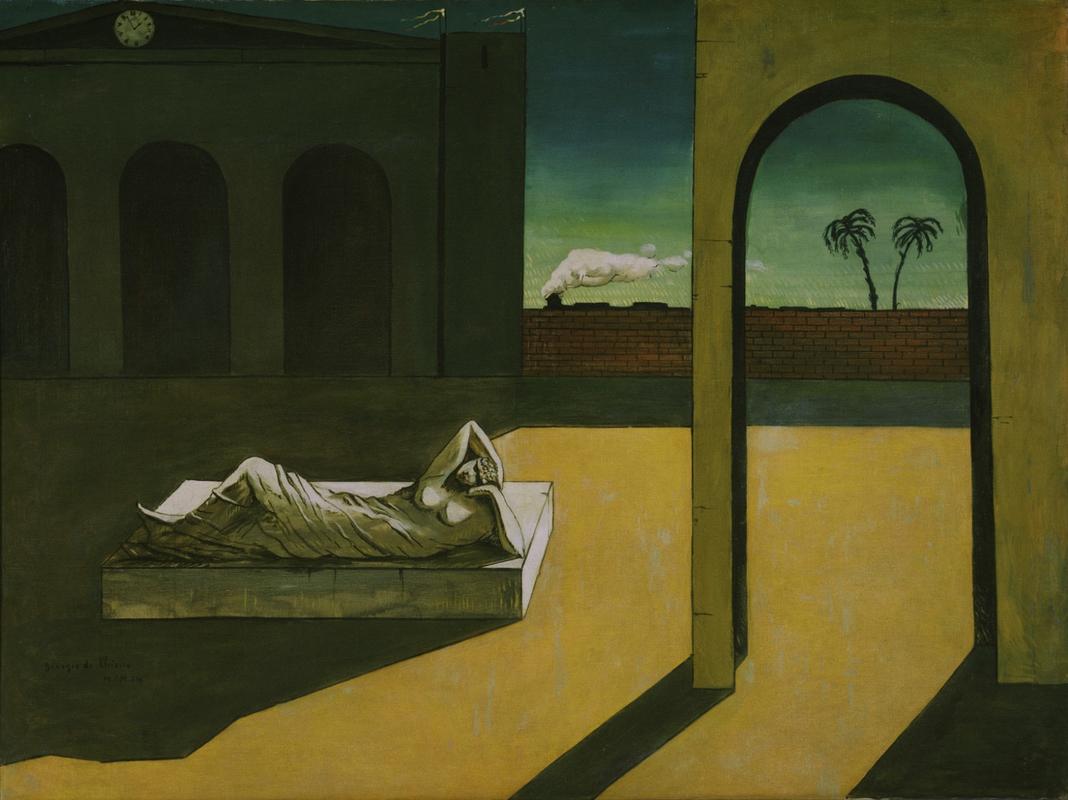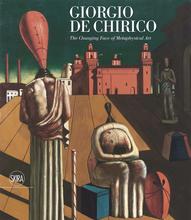More about The Soothsayer's Recompense
- All
- Info
- Shop

Contributor
Giorgio de Chirico made sense out of the nonsense; The Soothsayer’s Recompense is proof.
Banish the desire to rationalize for a moment. This is the realm of dreams. While the name of the painting invokes a prophet, there’s very little that squares with a possible reality. The vanishing points, revealed through the casted shadows of the setting sun, do not add up, like the imaginary number that’s recognizable but not actually attainable. The clock on the building only has eleven hours, a clock maker’s dozen. Good luck catching the train that is peaking its engine over the wall with its plumes of smoke.
Thankfully, the statue in the empty Italian square does not have to worry about time. She is a representation of the Greek myth Ariadne, daughter of the Minoan King, who fell in love with Theseus and helped him escape from her father’s Minotaur. The legend diverges from here (fittingly, since her story is tied to a maze), yet the two stories are similar in substance: the first has her abandoned by Theseus, hanging herself from her sorrow, and the other is that she’s left by her ungrateful beloved on the island Naxos where she is saved by Dionysus, the king of poetry and wine (possibly because her life was a tragic poem). More than the star-crossed love, what’s at the core of these two stories is abandonment. That’s the key to Ariadne’s story, and possibly to the Soothsayer’s Recompense.
Giorgio de Chirico lost his father at an early age. He was an Italian railway engineer that kept the family in motion like a nomad, and who died in the land that once kept time with the Olympiad. Sitting in the armchair like an unqualified psychoanalyst, this painting’s dreamlike qualities slip into a family drama. De Chirico, who was born in Greece, is the statue Ariadne waiting for his father, who appears here as the train arriving in the background. This might also explain why the statue is about to slip off of its pedestal: Chirico is so excited for the return of his father that he wants to meet him at the station steps. But this can never be, because it is not true, the untruth represented by the eleven hour clock.
That’s just one interpretation. Whatever the case, this period of de Chirico’s painting, sometimes referred to as “the empty piazza” period, was his most successful, both financially and in measured influence. De Chirico, in many ways, was the soothsayer to the surrealist movement, to Dalí and Magritte.
Sources
- Pritchard, Claudia. "Squaring the Ancient and the Modern: The Art of Giorgio De Chirico." The Independent. January 05, 2014. Accessed January 2019. https://www.independent.co.uk/arts-entertainment/art/features/squaring-…
- Britannica, The Editors of Encyclopaedia. "Giorgio De Chirico." Encyclopædia Britannica. November 15, 2018. Accessed January 2019. https://www.britannica.com/biography/Giorgio-de-Chirico#ref216264.
- Britannica, The Editors of Encyclopaedia. "Ariadne." Encyclopædia Britannica. February 16, 2018. Accessed January 2019. https://www.britannica.com/topic/Ariadne-Greek-mythology.
Featured Content
Here is what Wikipedia says about The Soothsayer's Recompense
The Soothsayer's Recompense is a 1913 painting by Italian painter Giorgio de Chirico. It is now in the Philadelphia Museum of Art as part of the permanent collection. It was accessioned in 1950 as one of the thousand items donated to the institution by Walter and Louise Arensberg. The piece was created in France, through a process of "squaring-up" in which Chirico drew a version of the piece divided into nine squares, and subsequently used this draft to quickly create the fleshed-out painting.
Check out the full Wikipedia article about The Soothsayer's Recompense













